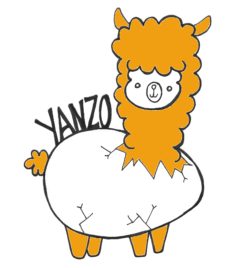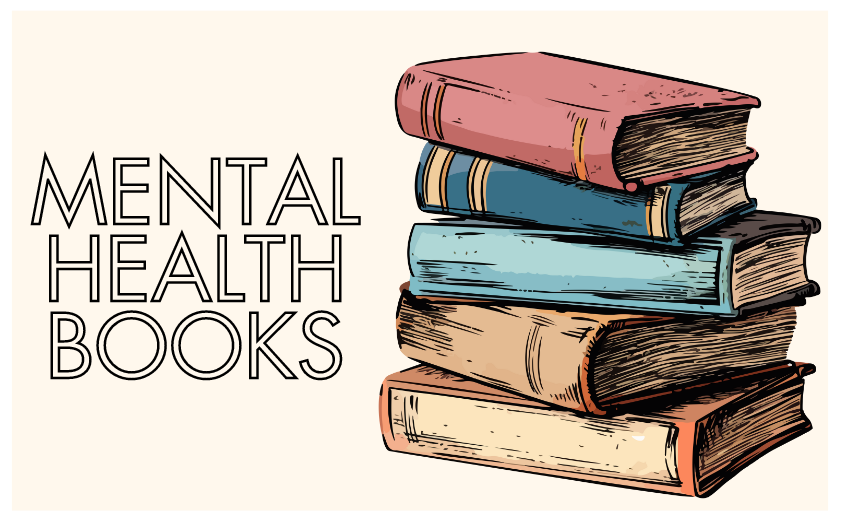10 Anxiety Self-Help Books
Introduction

Anxiety, a ubiquitous presence in the lives of many, often threatens to overshadow one’s peace of mind.
In such times, a well-crafted, insightful book can serve as a beacon, guiding individuals through the tumultuous sea of anxiety towards calm shores.
This article compiles a list of top-tier self-help books that offer different approaches to managing anxiety, stress, and depression.
Embracing the Power of Positivity
Book 1: “Be Calm” by Jill Weber, Ph.D.

Be Calm, penned by clinical psychologist Jill Weber, Ph.D., is a commendable self-help book designed to assist individuals in comprehending and managing their anxiety symptoms.
This book is unlike other traditional ‘sit-and-read’ books; it serves more as a reference guide for immediate relief during anxiety attacks.
Weber’s book incorporates techniques from Cognitive Behavior Therapy (CBT), Acceptance and Commitment Therapy (ACT), and mindfulness. The book includes a journaling section with prompts designed to reinforce the strategies discussed. It’s crucial to remember that these techniques require practice, and one should be patient while trying to implement these changes.
Humorous Approach to Overcoming Anxiety
Book 2: “Don’t Feed the Monkey Mind” by Jennifer Shannon, LMFT

Anxiety often feels like a relentless cycle of overthinking, worrying, and self-doubt. Don’t Feed the Monkey Mind, authored by psychotherapist Jennifer Shannon, offers a humorous and entertaining approach to tackling anxiety.
The book asserts that certain behaviors feed the ‘monkey mind,’ an analogy for the cycle of anxiety. By identifying these behaviors and taking steps to control them, one can keep the monkey mind in check. Shannon’s book, with its fun illustrations and a dash of humor, makes managing anxiety seem achievable.
Deep Dive into the Realm of Anxiety
Book 3: “A Liberated Mind” by Steven Hayes, Ph.D.

A Liberated Mind, authored by psychotherapist Steven Hayes, dives deep into the relationship between anxiety and painful experiences.
The book challenges traditional views of anxiety, proposing that pain is natural and occurs because we care. By listening to the pain rather than avoiding it, one can initiate healing.
Hayes uses Acceptance and Commitment Therapy (ACT) to teach psychological flexibility skills, which can significantly alleviate anxiety symptoms and make room for joy in life. The book is heavy on content but Hayes’ engaging writing style makes it an easy read.
4. Engaging with Anxiety through Interactive Workbook
Book 4: “The Dialectical Behavior Therapy Skills Workbook” by David Lawson, Ph.D.

Workbooks are an effective way to personalize new strategies and find techniques that work for you.
The Dialectical Behavior Therapy Skills Workbook by David Lawson, Ph.D., is designed to address anxiety caused by personality disorders and overpowering feelings that arise when anxiety strikes.
Written by three experienced psychiatric caregivers, the workbook offers clear, helpful exercises and a wealth of information about anxiety and personality disorders. It’s best used in tandem with talk therapy for optimal results.
Quick Read to Overcome Negative Self talk
Book 5: “Negative Self-Talk and How to Change It” by Shad Helmstetter, Ph.D.

Negative self-talk often fuels anxiety. Negative Self-Talk and How to Change It by Shad Helmstetter, Ph.D., condenses years of experience into a brief 60-minute read.
This book offers simple language and effective techniques to alter negative thought patterns.
The brevity of the book does not compromise its effectiveness. Helmstetter skillfully addresses the core of negative thoughts and provides practical tactics to avoid them.
Helping Teens Navigate Anxiety
Book 6: “Feeling Better: CBT Workbook for Teens” by Rachel Hutt, Ph.D.

Teenagers, with their unique stressors and growing pains, often struggle with anxiety. Feeling Better: CBT Workbook for Teens, authored by Rachel Hutt, Ph.D., offers a unique approach to managing stress and anxiety during these sensitive years.
The book amalgamates therapy strategies with goal-setting tasks and interactive activities, helping teens gain control over their emotions and manage anxious feelings. The informational sections are engaging and concise, and self-assessments and quizzes throughout keep the reader interested.
Addressing the Unique Pressures Faced by Girls
Book 7: “Under Pressure” by Lisa Damour

Under Pressure, authored by clinical psychologist Lisa Damour, tackles the specific pressures, stress, and heightened anxiety that girls experience during their childhood and teenage years.
This book is a must-have for parents, teachers, coaches, or anyone working with teenage girls.
Damour explores why anxiety is disproportionately high among girls and how external pressures contribute to it. She offers strategies for managing stress at home, at school, and in relationships with peers and parents.
Overcoming Social Anxiety
Book 8: “How to Be Yourself” by Dr. Hendriksen

For individuals grappling with social anxiety, How to Be Yourself by Dr. Hendriksen offers practical advice.
The book asserts that everyone has the potential to be successful in social situations; one just needs to learn how to tap into it.
The book progresses from understanding social anxiety to changing thinking habits, to venturing into the world, and putting hard work into action. Hendriksen concludes the book with a discussion on fostering healthy, long-lasting friendships despite social anxiety.
9. Cognitive Behavioral Therapy for Anxiety
Book 9: “Retrain Your Brain” by Seth Gillihan

Retrain Your Brain, authored by clinical psychologist Seth Gillihan, highlights the importance of Cognitive Behavioral Therapy (CBT) for anxiety management and relief.
The book emphasizes recognizing anxiety-inducing thoughts, stopping them, and replacing them with rational thoughts.
The book includes real-life examples and helpful exercises to facilitate long-term changes in a brief time period. If you’re looking for a structured approach grounded in science, this book is an ideal starting point.
10. Understanding Grief-Induced Anxiety
Book 10: “Anxiety: The Missing Stage of Grief” by Claire Smith

Sometimes, the root of anxiety lies in grief. Anxiety: The Missing Stage of Grief, authored by licensed therapist Claire Smith, explores the often-overlooked link between grief and anxiety.
Understanding how the two connect can help calm anxiety through the right techniques.
Smith provides real-world examples and methods to help you change your mental habits and confront your grief. The book also offers guidance for using writing to cope with grief and practice being present in the moment.
Conclusion
Anxiety can feel like an insurmountable obstacle. However, with the right resources, it can be managed and even overcome. These books, each offering a unique perspective on anxiety, can serve as invaluable tools in your journey towards a calmer, more peaceful state of mind.
Important Note
While these books offer helpful guidance, they are not a substitute for professional medical advice, diagnosis, or treatment. If your symptoms persist or worsen, please seek immediate medical attention.
Remember, you are not alone in this journey. Reach out, seek help, and know that it’s okay to ask for assistance when you need it. With perseverance, patience, and the right resources, you can navigate your way through the labyrinth of anxiety and emerge stronger on the other side.


